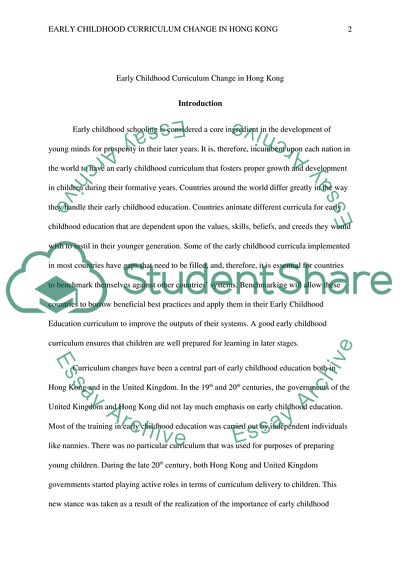Cite this document
(Early Childhood Curriculum Change in Hong Kong Literature review Example | Topics and Well Written Essays - 4000 words, n.d.)
Early Childhood Curriculum Change in Hong Kong Literature review Example | Topics and Well Written Essays - 4000 words. https://studentshare.org/education/1873515-a-research-paper-about-early-childhood-curriculum-change-in-hk-compare-to-uk-and-how-to-intergrade-the-curriculum-to-help-children-in-hk
Early Childhood Curriculum Change in Hong Kong Literature review Example | Topics and Well Written Essays - 4000 words. https://studentshare.org/education/1873515-a-research-paper-about-early-childhood-curriculum-change-in-hk-compare-to-uk-and-how-to-intergrade-the-curriculum-to-help-children-in-hk
(Early Childhood Curriculum Change in Hong Kong Literature Review Example | Topics and Well Written Essays - 4000 Words)
Early Childhood Curriculum Change in Hong Kong Literature Review Example | Topics and Well Written Essays - 4000 Words. https://studentshare.org/education/1873515-a-research-paper-about-early-childhood-curriculum-change-in-hk-compare-to-uk-and-how-to-intergrade-the-curriculum-to-help-children-in-hk.
Early Childhood Curriculum Change in Hong Kong Literature Review Example | Topics and Well Written Essays - 4000 Words. https://studentshare.org/education/1873515-a-research-paper-about-early-childhood-curriculum-change-in-hk-compare-to-uk-and-how-to-intergrade-the-curriculum-to-help-children-in-hk.
“Early Childhood Curriculum Change in Hong Kong Literature Review Example | Topics and Well Written Essays - 4000 Words”. https://studentshare.org/education/1873515-a-research-paper-about-early-childhood-curriculum-change-in-hk-compare-to-uk-and-how-to-intergrade-the-curriculum-to-help-children-in-hk.


